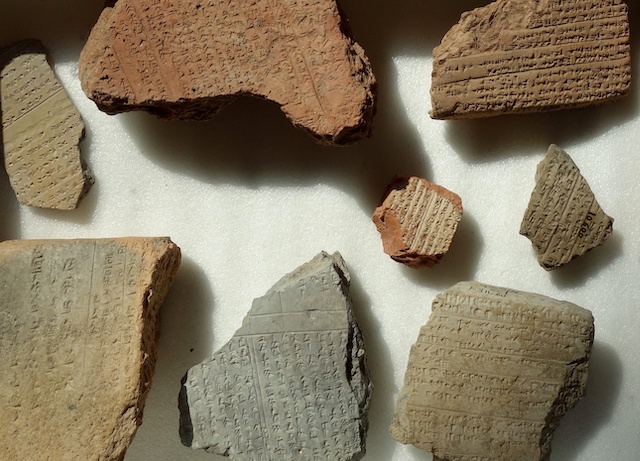The so-called cult inventories are texts that report on the state of religious festivals, rites, cult objects, and cult supplies in a number of provincial towns and villages under Hittite control, thereby documenting the interaction between central administration and local settlements. As such, they do not concern the official “State cults,” but rather a variety of rites and customs, which in part preserve local traditions. Because of its nature and size, this corpus represents an unicum within the ancient Near East, which is of relevance for the comparative history of religions as well as for centre-periphery studies. Within Anatolian studies, the corpus is especially relevant to the study of historical geography, of regional and local Hittite panthea, religious iconography, the production and logistics of cult supplies, and the participation of village communities in rites and festivals.
“When in spring it thunders, they open the pithos, and grind (and) mill it(s content). (The priest) of[fers] 1 sheep to the Storm god of the Rain. They place the meat (there), raw (and) cooked. Loaves of bread of the pith[os, n vessels of beer] at the altar; 30 loaves of one handful (of flour), 3 vessels of beer (are) the provisions. They br[eak] loaves of bread, fill the BIBRU-vessels, eat (and) drink, pr[ovide] the cups. They pour 1 bowl of beer, in its entirety, on the ground, and speak concurrently: ‘O Storm god, my lord, make rain plentiful! And make the dark earth satiated! And, O Storm god, let the loaves of bread become plentiful!’”(KUB 25.23+ iv 51′-59′: spring festival for the Storm of the Rain in Ḫakmiš, northern Anatolia)
The project “Critical edition, digital publication, and systematic analysis of the Hittite cult-inventories (CTH 501-530)” aims to provide a comprehensive digital edition of the Hittite cult inventories, a searchable database of the Hittite local cults, and selected studies of related topics.
The research has been conceived and carried out by Michele Cammarosano at the Julius-Maximilians-Universität Würzburg with funding by the German Research Foundation (DFG, project no. 298302760). Additional funding has been made generously available by the Chair of Ancient Near Eastern Studies of the University of Würzburg. The research work has greatly benefited from a cooperation with the project “Corpus der hethitischen Festrituale” (HFR) at the Academy of Sciences and Literature | Mainz: the support of its directors, Daniel Schwemer and Elisabeth Rieken, and of its postdoctoral researchers, especially Susanne Görke, Silvin Košak, Jürgen Lorenz, Gerfrid G.W. Müller, and Charles Steitler, is gratefully acknowledged, as are the invaluable resources of the Hethitologie-Portal Mainz, in particular the Konkordanz der hethitischen Keilschrifttafeln by Silvin Košak and the Groddeks Liste der Sekundärliteratur zu Textstellen aus Boğazköy by Detlev Groddek. Finally, the project benefited from the advice and support of further colleagues, in particular Adam Kryszeń (Warsaw) and Andreas Schachner (Istanbul and Würzburg). The collation of original manuscripts at the Museum of Anatolian Civilizations in Ankara was made possible by kind permission of the Turkish Ministry of Culture and Tourism. Elisabeth Rieken and Andreas Müller-Karpe (Marburg) generously provided the opportunity of studying the newly excavated fragments from Kayalıpınar. The inclusion of these fragments in the edited corpus paved the way for a six-month project extension, funded by the DFG under the same project number. Overall the project lasted 42 months (October 2016 to March 2020).
Wednesday, April 28, 2021
Hittite Cult Inventories
Subscribe to:
Post Comments (Atom)










 Stumble It!
Stumble It!

No comments:
Post a Comment